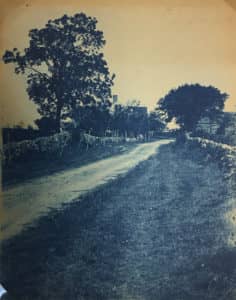Create
Arts & Crafts museum celebrates birthday, two new exhibits

It was one year ago today that the five-story Museum of the American Arts and Crafts Movement opened on 4th Street North, its 40,000 square feet of gallery space dedicated exclusively to late 19th/early 20th century American Arts and Crafts.
“I am constantly overwhelmed by the support of our 2,000+ members and the generosity of our volunteers and docents, who have facilitated programs and lead over 200 guided tours,” said the museum’s owner and benefactor, collector Rudy Ciccarello, in an email interview with the Catalyst.
“In the past year we have welcomed over 30,000 visitors, launched programs such as our MAACM Family Days and Film Series, hosted special performances from the Tanglewood Marionette Company and opened two exhibitions culled from our own collection as well as the international exhibition Charles Rennie Mackintosh: Designing the New.”

The museum’s collection is Ciccarello’s own – considered by international art experts as one of the finest and most complete in the world – endowed to the museum through his Two Red Roses Foundation.
Two new exhibits, curated by Ciccarello himself from the Two Red Roses collection, open Friday. Arthur Wesley Dow, His Beloved Ipswich features a collection of works by the celebrated Massachusetts painter, printmaker, photographer and teacher (Georgia O’Keefe and Max Weber were two of his most notable students). And American Arts and Crafts Woodblocks includes works by Eliza Draper Gardiner, Frances Gearhart, Edna Boies Hopkins, BJO Nordfeldt, Margaret Jordan Patterson and more.
The latter includes a 1916 woodblock print, by Eliza Draper Gardiner, depicting a young girl picking poppies. Ciccarello says it was his very first woodblock purchase.
“I often wondered why I bought this print of a small girl in a dress, picking tall, red Icelandic poppies in a garden,” he explained. “I guess I really liked it and perhaps thought that my daughter would like it as well.”
St. Pete Catalyst: Can you explain why Dr. Dow’s work is A, historically significant and B, appeals to you as an appreciator and as a collector?
Rudy Ciccarello: Dow’s work is important because he codified the ideals and aesthetics of Japanese art and composition not only in his own artistic practice but also for teachers. He had strong ideas about overall design and aesthetics that he explored throughout his lifetime in a variety of mediums, and passed on to others through lecturing, writing, and teaching. His ways of teaching both artists and art teachers changed the landscape of art and art education.
Throughout our galleries at MAACM you can see the effect Dow had on the arts and artisans of the time and the repercussions of his teaching are seen as a ripple throughout artistic production America for generations.

Yellow Flowers, Ipswich, c. 1905; Arthur Wesley Dow, American, 1857-1922; 18 X 24 in; Oil on canvas.
As I understand them, Dow’s aesthetic principles included painting in abstract tones, as opposed to realistic. Is this what he learned by studying Japanese art, and how did it affect his Ipswich landscapes?
His formal French art education was based in the academic tradition, steeped in anatomy and art history, but Dow was not satisfied with his training. He moved beyond his education in the early 1890s, when his ideas about art changed dramatically. The catalyst was his discovery of Japanese ukiyo-e prints and the understanding of the Japanese design concept of notan (how light and dark elements of composition interact only using black and white). The study of these prints inspired him in their different uses of compositional space, flattening of planes, emphasis on diagonals, asymmetry, negative space, and abstract approach to color. Dow learned these eastern principles of design, composition, synthesis and impressionism and gradually assimilated these into his work.

The Farm Road from Ipswich Days, c. 1899; Arthur Wesley Dow, American, 1857-1922; 5 x 3; Cyanotype.
Are the included photographs actual period studies that he used in the creative process?
While some of his cyanotypes served as studies for paintings or prints, Dow clearly considered many -such as those in this exhibition – to be stand-alone works of art. It is likely that Dow adopted the cyanotype not for its simplicity, but for its unique qualities, such as the dream-like effect that the overall cyan blue provided, as well as its ability to unify a composition.
In the 50-60 years American artists were experimenting with color woodblock prints, what sorts of innovations and breakthroughs resulted? In other words, how did the art form change over time?
The color block print in America had its beginnings in the 1890s, roughly corresponding with the interest in Japonisme and the Arts and Crafts movement that occurred in Europe and America in the late 19th century.

Tulips, 1920
Blanche Lazzell, American, 1878-1956
Woodblock white-line color print
11 15/16 x 11 9/16 inches
Two Red Roses Foundation Collection.
Various methods of making color block prints developed and the earliest was the use of multiple blocks. This is a process where the artist/craftsman carves away the area of the block that is not meant to print. The resulting relief is then inked and printed. Each color requires a new block, which then has to be printed exactly over the previous color(s) to stay in register. This requires great skill and practice to perfect.
The single block, or “white line” method was developed in Provincetown, Massachusetts in the early part of the 20th century. This method employed one block and it involved a negative key line incised around the design elements that would result in a white line when the block was printed. The artist colored the separate relief areas and hand printed each impression using a barren or a wooden spoon. The resulting impressions varied in colors. The popularity of the white-line method, which greatly simplified the tedious multi-block method, continued well into the late forties. The exhibit shows many white-line color woodcuts, executed in the 30’s and 40’s by artists such as Weinrich, Knaths, and the undisputed master Blanche Lazzell.
The reduction block print was another method using a single block. It was developed in the 1950s and popularized by Picasso using linoleum blocks in the early 1960s. This method uses a system of carving and printing the remaining relief areas of a single block. Each color requires carving of the same block further reducing the image size. The image area on the block often barely exists.
Hot Club SRQ (violin and guitar jazz band) performs for the museum’s Birthday Bash, starting at 5 p.m. today in the ballroom. Tickets are available here.

The Rug Weaver, 1910/1914 Gustave Baumann, American (born Germany), 1881-1971. Color woodblock print. 9 x 13 inches. Two Red Roses Foundation Collection.








Jennie Ibarguen
September 7, 2022at4:51 pm
So glad to see the museum getting done press! I recently went for the first ti e with my daughter and enjoyed it… I even got a membership! The cafe is wonderful as is the shop.